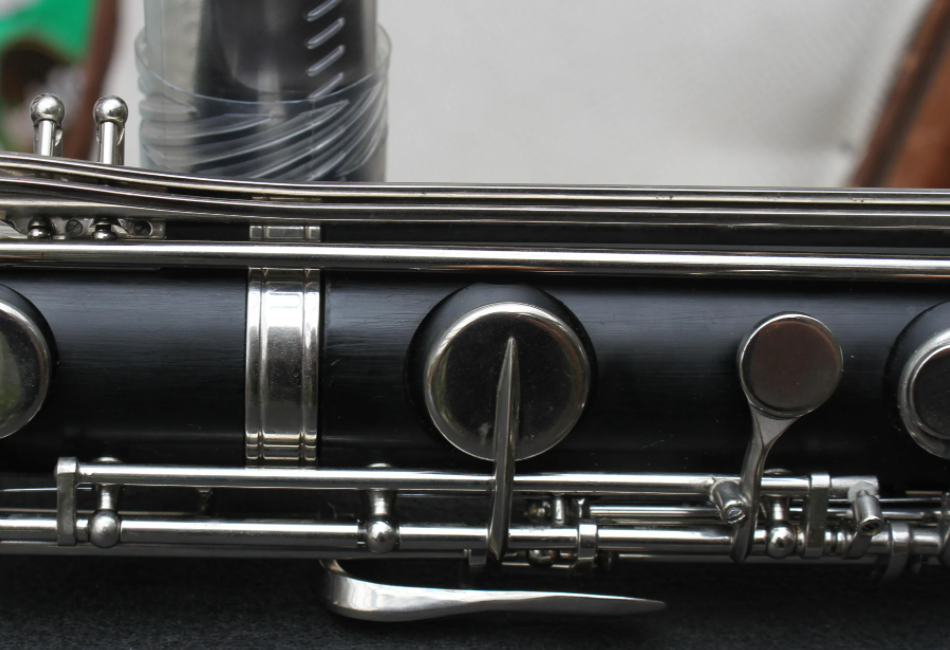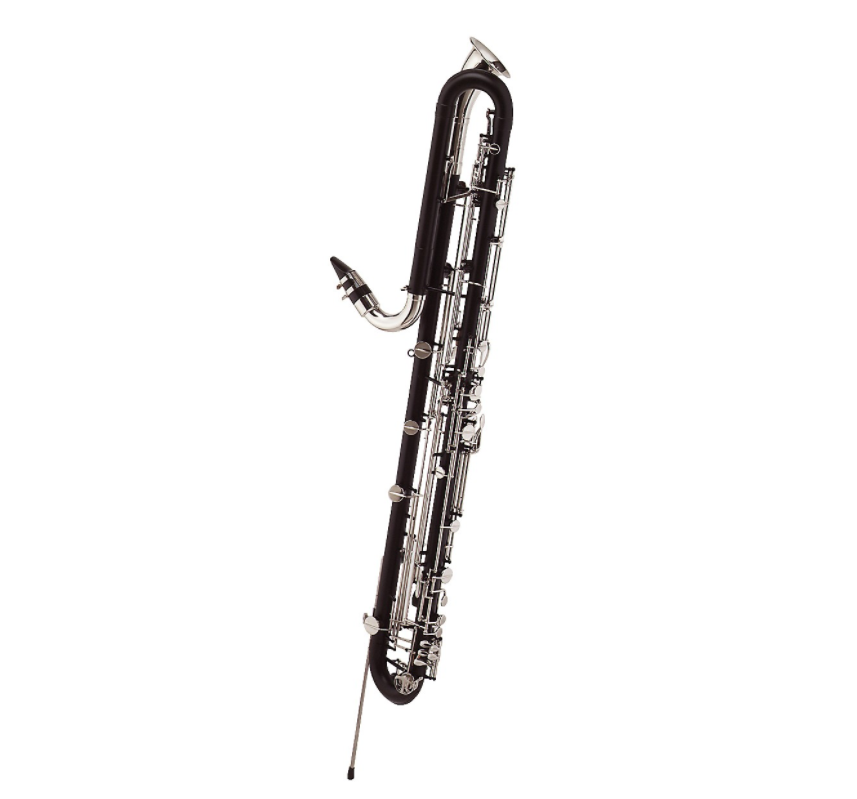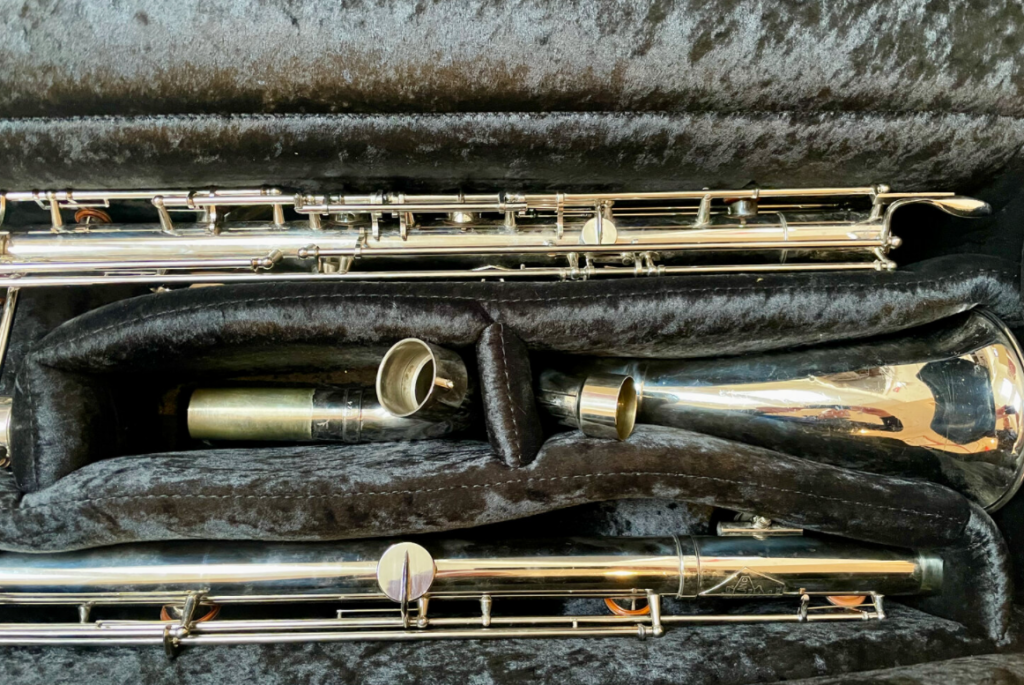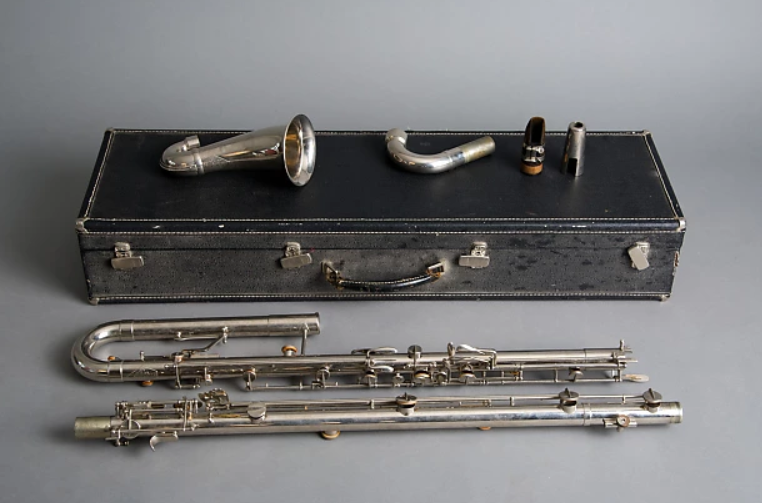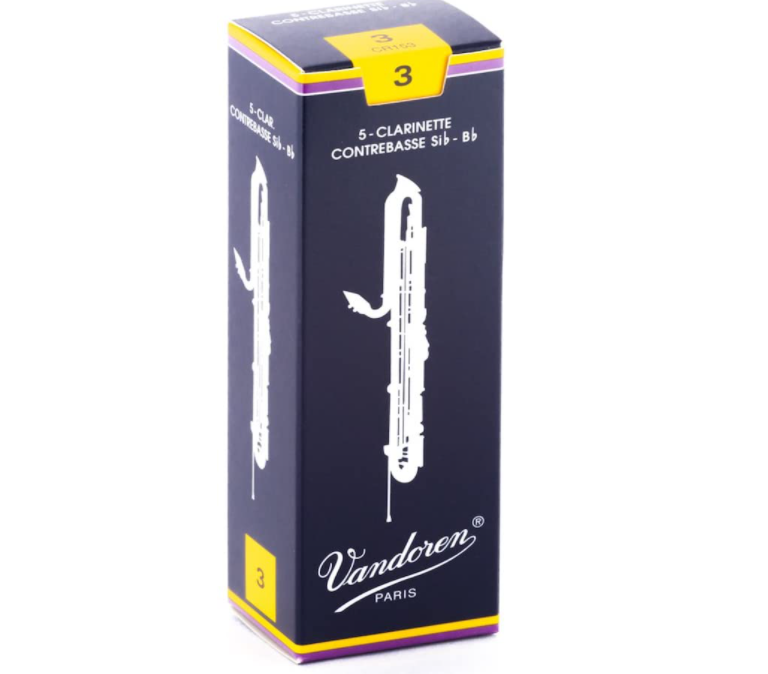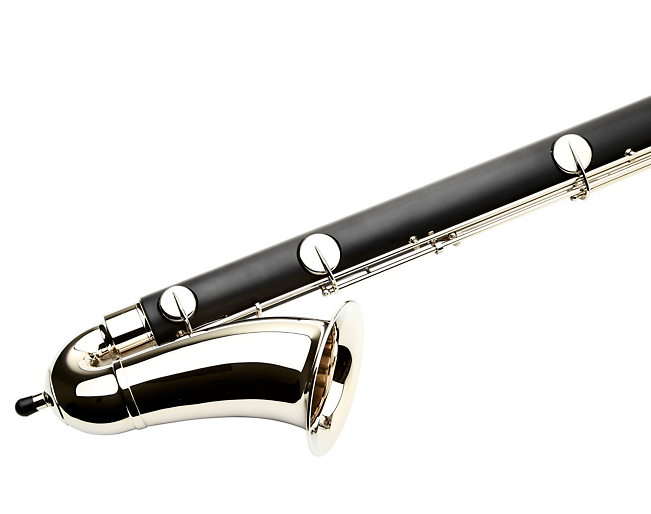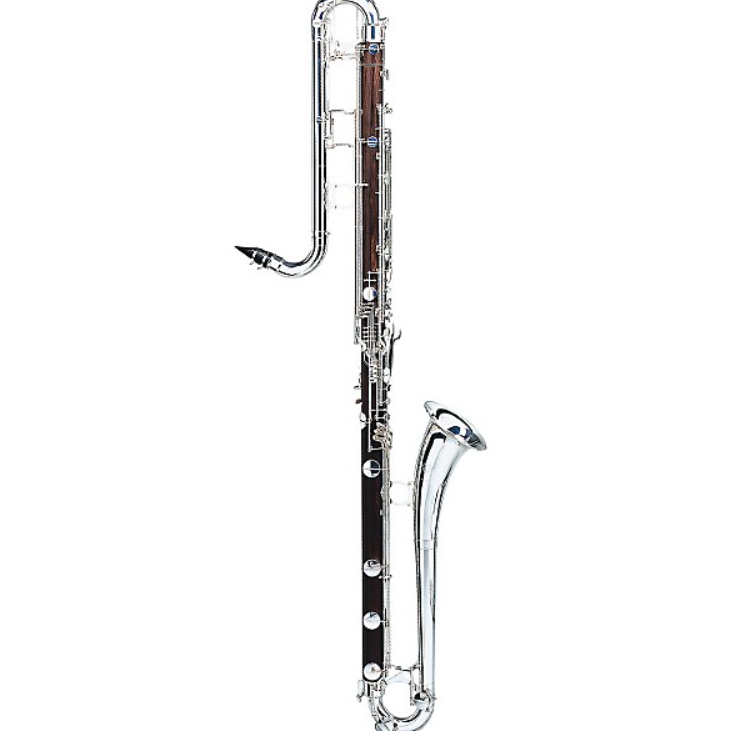- How to Find the Best Sopranino Saxophone - May 31, 2022
- How to Find the Best Contrabass Saxophone - May 30, 2022
- Trumpet Range Guide: Understanding The Entire Trumpet Range - May 19, 2022
Are you bored of playing standard clarinet parts or even bass clarinet music? You should consider how to find the best contrabass clarinet to make playing music fun again.
The low instrument isn’t for every player, but it’s worth testing out. If you like it, you may be able to play more music and have fun with a new type of clarinet.
Bottom Line Up Front: There aren’t a ton of contrabass clarinets out there, so you can’t be too picky. But you can try more than one of the same model, such as more than one Leblanc Model 7182, to see if one suits your needs.
How to Find the Best Contrabass Clarinet
Even if you already have a Bb clarinet, bass clarinet, or any other instrument from the family, you should consider how to find the best contrabass clarinet. You can use similar steps, but the contra is its own beast.
For one, the selection of contrabass clarinets is much smaller. You may not have as much flexibility when it comes to choosing the perfect instrument.
Still, it helps to have a process you can follow to figure out which available model is the best fit. Then, you can look forward to playing the massive instrument.
Start With Your Clarinets
First, you should take a look at the types of clarinets you own and play. Consider their brands and the level of the models you have that you like you use.
While not all clarinet brands make contras, you can use your brands to help figure out what you might prefer. For example, if you play a Selmer Bb or bass clarinet, you’ll probably like the contrabass clarinet from the same company.
On the other hand, if you don’t like that brand very much, you might not like a contrabass from them. That can be helpful to consider if you don’t have a chance to try a contrabass clarinet before you buy it.
Determine Who Will Play It
When buying a Bb clarinet or even a bass, you’re probably buying it for your own use. However, contras are so rare and expensive that it’s not uncommon for a school to buy one for the clarinet section.
At my college, the music department owned a contrabass clarinet that multiple students could use. The clarinet professor may have helped select the right model, but she doesn’t own it.
Whether you’re a clarinet teacher or band director, consider if you’ll buy the instrument for students. Then, you can make sure to prioritize durability and ease of playing.
Consider Available Brands
Because the contrabass clarinet isn’t super common, you should look at the brands that are available. In my search, I could only find a couple of companies that make this low clarinet.
It’s not worth making a contrabass for many companies because of the time and materials. Two good brands to consider include Leblanc and Selmer.
Of course, you also have to consider what’s available at your local music store. They may only have one model in stock, so you might not have any choice if you need an instrument now.
Beware Cheap Contrabass Clarinets
Even though it’s not a popular instrument, you can still find one or two cheap knockoffs. These cheaper clarinets may seem like a good deal, but they usually are of lower quality.
Whether you get a cheap or expensive contra, you’ll be paying a lot of money. You want to make sure you get the best bang for your buck, and that usually means paying more for a better model.
If you skimp and get a cheap one, you might break it within a few months. Students might also break it with normal use, so don’t waste your money.
Look at Your Finances
Before you whip out your credit card, take a look at your financial situation. If you’re buying a contra for your use, you can refer to your bank account.
When buying an instrument for your school or studio, you have to look at other funds. Consider the amount of money your institution has allocated to instruments or clarinets, specifically.
In both cases, you’ll be able to determine if you can afford a contra or if you’ll need to save up. Saving money can be good because it lets you take time to verify that you really want a contrabass clarinet.
Decide If You Want Financing
If you can’t afford to pay for a contrabass clarinet in full, you may want to finance the purchase. Many good music stores will have a financing option, and some even have 0% interest rates for up to a year.
I’ve financed instruments in the past, and it’s a great way to save money, especially on something expensive. You don’t have to wait until you save up a ton of money to get a contra.
That’s particularly nice if you try a contra that you like. A lot of handmade instruments have small nuances, so you might not like a different serial number of the same model.
Set a Budget
Speaking of the financial side, you should figure out a reasonable budget. The two reputable brands that make contrabass clarinets price them very differently.
As you look at the different models, consider how much you want to spend. You don’t have to get the most expensive model, and it might not be the right fit for you anyway.
However, having a large enough budget can give you more options as you shop for a contra. Then, you won’t have to compromise because of your money.
Select Some Trial Music
If possible, I highly recommend trying any contrabass clarinet before you purchase it. To do that, you’ll need to plan out some exercises or pieces to use to test the instrument.
You can use the same music that you might play on your Bb or bass clarinet since the written range is the same. That way, you don’t have to learn a bunch of new music if you’ve never played a contra.
Make sure you choose music that goes low and high as well as soft and loud. While you may not have a bunch of fast notes on a contra, consider using technical and lyrical passages to test an instrument.
Test a Few Models
If you can, make time to test a few contrabass clarinet models. You may not be able to test different model numbers, so try a few individual contras of the same model.
That way, you can see if one feels easier to play or sounds better than another. Sometimes, there can be small differences, so you should buy the one you like the best.
If you’re a band director shopping for a contra, ask a clarinet player or teacher to try the instruments. They can help you make the best decision for your students.
Don’t Forget Accessories
Unfortunately, you will need to buy all new accessories when you buy a contrabass clarinet. You need a dedicated contrabass clarinet mouthpiece since it’s much bigger than a bass.
Of course, that also means you should get some contrabass clarinet reeds so that you can play the instrument. If you get a few of these accessories, you can swap them out, even if you only get to try one contrabass clarinet body.
For some players, a different mouthpiece or reed may make a world of difference. So before you write off a whole model, consider ways to customize the sound and response.
Think About Used Models
It can be easy to think you need the shiniest, newest contrabass clarinet. However, a used model can be an excellent option if you want to save money on your purchase.
When buying a used model, consider if you can try it before buying. A seller may not accept returns, so you could waste thousands of dollars on an instrument that won’t work for you.
Then there’s the fact that used instruments may not be in the best condition. You might need to spend even more money fixing the contra to make it playable.
Still, give a used model a try if you can. Go to a music store or meet up with someone in person if you live close to an individual seller to make sure the instrument is for you.
Keep Shopping
You may not find the best contrabass clarinet right away, and that’s normal. With a small selection, it can be hard to find the ideal model on your first shopping trip.
Before you give up hope, keep shopping around. Try different serial numbers of the same model as they come into a local music store.
Keep an eye on marketplaces like eBay or Facebook Market to see if any contrabass clarinets pop up for sale. You may just find an excellent instrument that suits your needs.
Best Contrabass Clarinets
I looked at three different contrabass clarinets and found that only two are worth your time or money. The third one is available from a cheap manufacturer that doesn’t specialize in instruments.
If you want to get the best playing experience, you should avoid that cheap clarinet if you can. While that narrows your search to two models, that’s still something.
Consider trying a few clarinets of each model to see if one feels the best. Then, you’ll be able to look forward to playing the contra.
Leblanc Model 7182
The Leblanc Model 7182 is the more affordable of the two best contrabass clarinets. Now, it’s still pretty expensive, so this model isn’t for the faint of heart.
It’s in the key of Bb, so it plays an octave lower than a bass clarinet and two octaves lower than the standard clarinet. The bore is 1.182 inches, which can help you get a full sound.
You can play down to a low Eb, so you should be able to play most contrabass clarinet parts. Meanwhile, the resin body has a wood-like finish, which helps it fit in with a clarinet section.
The body and its nickel-plated keys help keep the instrument from being too expensive. It offers a rich, dark tone, so you can play alone or as part of a group.
Pros
- Dark sound
- Easy to play
- Good range
- Looks nice
- Comes with a case
Cons
- The included mouthpiece isn’t the best
- Sounds a bit flat
Selmer Paris Contrabass Clarinet
If you’re looking for the best of the best when it comes to contras, you should try the Selmer Paris Contrabass Clarinet. The instrument is in the same key as the Leblanc, so you can play all of the same music on it.
Its bore is a bit wider than the Leblanc’s, at 1.33 inches, which helps you get a full tone. You also get a range that extends to low C, so you can play everything you might need to play on a contra.
There’s an articulated G# as well as an Eb lever and an automatic octave key. Plus, you’ll get a stand to help support the instrument during long practice sessions.
It comes with a standard mouthpiece and a case, so you just need reeds to start playing. However, you will need to save quite a bit of money to buy this instrument.
Pros
- Wood body
- Nice tone
- Comes with a mouthpiece and case
- Full range
- From Selmer
Cons
- Very expensive
- Runs a bit sharp
Where to Buy a Contrabass Clarinet
If you want to buy a new contrabass clarinet, you can look at sites like Woodwind and Brasswind. That’s where you’ll find the Leblanc contrabass.
When looking for the Selmer Paris model, you’ll want to go through an authorized dealer. That way, you can make sure you’re buying a genuine Selmer instrument.
If you prefer to try used contras, you can look online at places like eBay or Facebook. Consider joining instrument sales groups to see when people list a contrabass clarinet.
Then, you can ask the seller if they accept returns so that you can try the instrument. Of course, you can meet up with the seller in person to test the contra if they live near you.
FAQs About How to Find the Best Contrabass Clarinet
Answer: A contrabass clarinet is the lowest-pitched member of the clarinet family. That makes it the biggest instrument, and its sounding range can extend to Db1 or Bb0, which is about as low as a piano goes.
The contrabass clarinet features a big curve up and over between the mouthpiece and the keys. Then, there’s another curve at the bottom before the bell comes up and out.
Answer: You play a contrabass clarinet the same way you’d play any other clarinet, but you may need more air and a more consistent air stream. All clarinets have the same written range, so you don’t need to learn the bass clef.
Like other clarinets, you’ll hold the contra in front of you and blow into the mouthpiece and reed. You can usually rest the contra on a floor peg so that it doesn’t scratch the floor.
Answer: You should play the contrabass clarinet if you like the low range of notes. There aren’t a ton of parts for it, but you can find contra parts for wind ensemble pieces or clarinet choir works.
If you like the bass clarinet and want to go even lower, the contra may be for you. You can set yourself apart from other players when looking for gigs and other opportunities.
Answer: Anyone who loves the bass clarinet should try a contra at some point. The better you are at the bass clarinet, the easier it will be to transition to the contra.
You might also like the contrabass clarinet if you play the contralto clarinet and love it. The contralto falls between the bass and contrabass, so the switch may be even easier.
Answer: I’d recommend starting on the Bb clarinet if you’ve never played any of the clarinets. Once you learn the fundamentals, you can move on to the bass clarinet and learn how that works.
After you can play the bass clarinet well, the contra will be easier. Plus, you’ll know that you want to play it, and you can test out your skills on more affordable instruments.
Final Note on How to Find the Best Contrabass Clarinet
Knowing how to find the best contrabass clarinet may not make as big of a difference as other instruments. However, you should still consider what makes a contra worth your time and money.
I’d recommend the Leblanc 7182 for most players. It’s not too expensive, but it has the features you need to explore the lowest notes out there.
Looking for more interesting readings? Check out:

